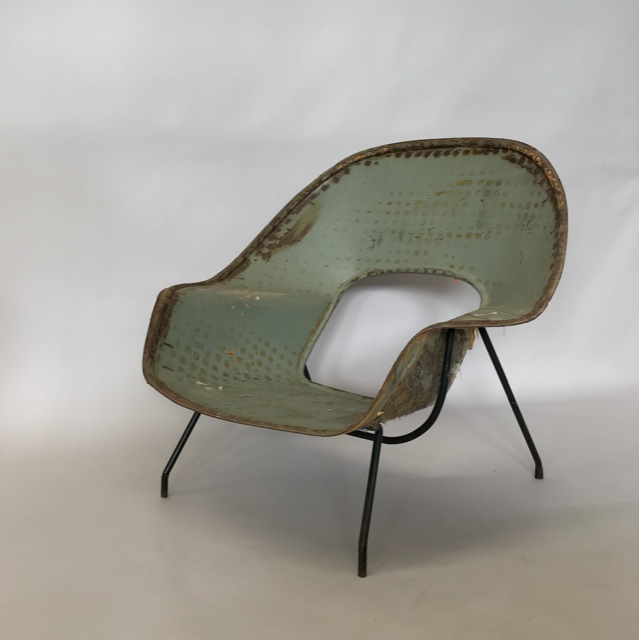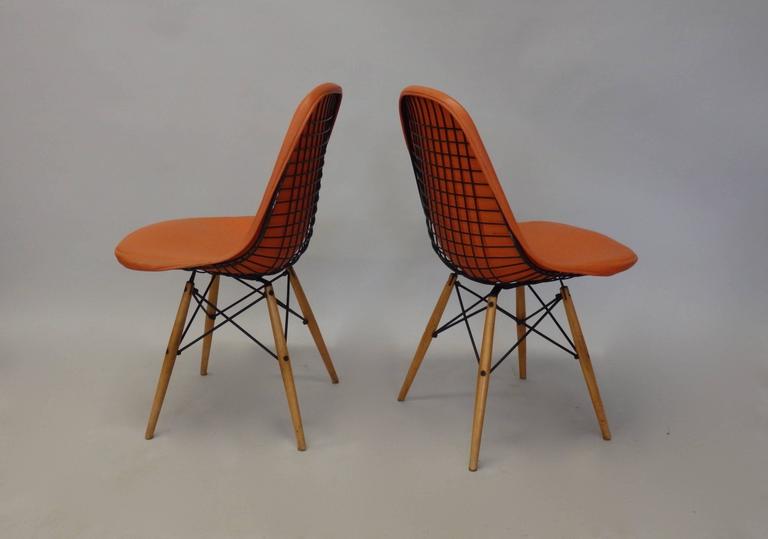We are excited to launch our Michigan Design Icons program for 2018 and look forward to a year of celebrating the past, present and future of Michigan design.
This month, we kicked off our MDI Design Talk Series with 'Naked Icons: Beneath the Surface of the Womb Chair'. Did you miss it? Not to worry, each month we will publish an article reviewing the topics of each MDI Design Talk.
Last week, we examined the history and fabrication of the Womb Chair.
The Womb Chair was introduced in 1948 by Knoll, the renowned Pennsylvania-based manufacturer that helped shaped American Modernism, led by the Michigan-born architect and designer Florence Knoll. For the Womb Chair Knoll famously requested, "I want a chair I can sit in sideways or any other way I want to sit in it," architect and designer Eero Saarinen obliged, creating one of the most iconic chairs of the 20th century.
The Womb Chair was born from the Organic Design in Home Furnishings Competition, sponsored by MOMA in 1940. The competition defined 'organic' as, "harmonious organization of the parts within the whole, according to structure, material and purpose.", and the winning designs would be part of a coinciding exhibition. The competition introduced the world to two Michigan designers who would become pioneers of American Modernism - Charles Eames and Eero Saarinen. Eames and Saarinen won for the Chair and Living Room categories and their innovative approach to materials, form and use of technology came to represent a new era of furniture design.
Eero Saarinen was the son of famous Finnish-American architect Eliel Saarinen, who was the dean of the Cranbrook Academy of Art in the 1930s. Saarinen not only grew up in Bloomfield Hills, Michigan, but the early years of his design education were spent at Cranbrook where he befriended Charles Eames, Ray Eames (neé Kaiser) and Florence Knoll (neé Schust) each of whom would become important collaborators.
It was through Saarinen's collaboration with Eames on the award winning "Organic Chair", that the concept for the Womb Chair was born and continued to develop over the course of several years.
Saarinen's design approach was driven by function and use. Often criticized for not having a "signature style", Saarinen believed form should be shaped around function. The Womb Chair was meant to be a truly comfortable chair, one that could be comfortably sat in, in a variety of ways and would act almost as a cocoon. The name 'Womb Chair' came from Saarinen's belief that none of us were truly comfortable since leaving the womb. From this concept the iconic form of the Womb Chair was born...but then Saarinen was faced with the challenge of finding just the right material to build the Womb with...
First experimenting with plywood then quickly moving to metal Saarinen ultimately discovered the early technology of fiberglass and the Womb Chair has been made with it ever since. In fact, the Womb Chair has been in constant production for 70 years and though the form has remained the same, the materials and technology within the chair have evolved over time. The technology of fiberglass has evolved immensely, as has the chemical composition of the upholstery foam, and the hardware on the frames has changed over the years. This certainly speaks to the iconic status of the Womb Chair's design as well as it's role in the manufacturing innovations of the 20th century.
By 1957, Saarinen's Womb Chair became a cultural icon, representing all things American, furniture of course, but quintessential American products as well - from Coca Cola to Southern Comfort - making appearances in a multitude of advertisements and even in a Norman Rockwell painting!
The influence of the Womb Chair, in design and fabrication, not only helped shape design in Michigan but around the world. The organic forms pioneered by Eames and Saarinen influenced international design, especially in designers in Denmark such as Arne Jacobsen whose Egg and Swan Chairs would be developed in the late 1950s.
Today the Womb Chair feels as contemporary and innovative as it did in 1948 and suits virtually any environment - public, private, modern, traditional. The Womb Chair has not only stood the test of time, it has become a timeless symbol of innovative, good design.


